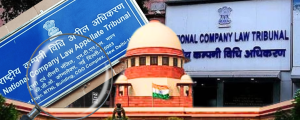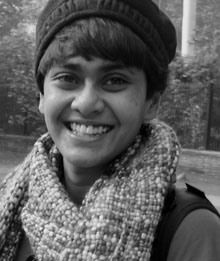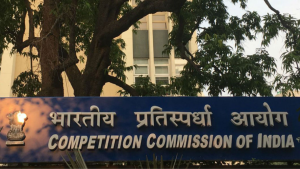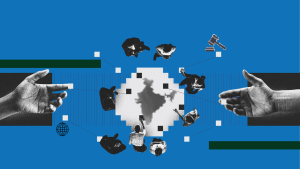

The Portrait of the Indian Litigant
If there were only a 100 litigants in India, 84 of them would be men, and 15 women. Only 1 transgender citizen is found litigating. 80 Hindus, 10 Muslims, 5 Christians, and 5 from other religions. 45 individuals belong to the general caste, 34 to OBC, 11 to SC and 3 to ST, the others unknown. 37 of these individuals work in agriculture, 34 in private services, 13 are self-employed, 11 are labourers, and 3 work for the government. 2 are unemployed. 15 people have no formal education, and 14 have studied at the primary level. 53 have finished their 12th class. Only 14 have Bachelors’ Degrees, and only 4 have Master’s Degrees.
The average litigant from this mix is likely to be a man. A man who has studied up to Class 12. His primary income is from work with or on agricultural land. His family has an income of 3 lakhs a year, or less. His family is more likely to own a mobile phone than have an LPG stove. He is an OBC Hindu, likely to be litigating against other OBC Hindus. He is likely to have reached the court in a bus, accompanied by a family member, and have found a lawyer through the reference of a family friend. If his is involved in a civil dispute, he is mostly fighting a land or property related matter.
The average litigant we have described spends nearly INR 519 a day just to get his work at court done, and this does not include his court fees. He loses INR 873 in wages or work and productivity. For people with an annual family income of less than three lakhs, this is no small amount. Using his personal resources in finding lawyers and working against the mounting expenses, he is still able to get to court and parlay with the system until the end. Our survey tell us that this man hoped to resolve his case in a year when he first filed it, even though it has been nearly 3 since he came to the court. But a case in a subordinate court takes six years in the court hall on average. By the time his case ends, there may a new Prime Minister in office.
And, disadvantaged as he is, this litigant still has far more resources than thousands of others who will have had to approach the same system with far less in hand.
It is the atypical litigant that has us worried. Women and transgenders, Dalits and tribals, uneducated and with an annual of less than one lakh paint a different picture. These are individuals who spend 25 per cent of their earnings on just their court cases. These are the people more likely to be brought to the court in handcuffs, and languish in jail for lack of funds to avail of bail.
And yet, despite the acute socio-economic needs of these groups, only 2.36 per cent of litigants will be given court-appointed lawyers. Nearly 7 per cent of criminal under-trials interviewed in our survey have no sense of whether they can be granted bail. These litigants find themselves lodged within judicial system with little or no knowledge, and certainly none of the guidance they require.
Our survey tells us that while a court itself may have a typist and stamp vendor, there is no information desk to guide the new litigant towards legal aid and assistance. This is despite the National Legal Services Authority that is meant to provide legal representation and education, which is clearly falling grossly short of its mandate.
Thanks to NCRB (National Crime Records Bureau) data, it is now well known that 2,82,879 inmates in prisons are under-trials. The Access to Justice Survey reveals that 92 per cent of under-trials interviewed were first time offenders. 31 per cent of litigants accused of crimes could not afford the bail or did not have anybody to stand surety for their case. 21 per cent of these litigants stated that they had spent more time in jail than prescribed for their punishment. Even accounting for a margin of error in these numbers, it is shocking to confront the truth of the criminal justice machinery. The now decade-old Section 436 A of the Criminal Procedure Code makes specific the requirement that under-trials who are detained beyond the maximum period of imprisonment for their alleged offense are released. When will this come into effect?
But it is typical that a moment of fierce public debate on the nature of the judiciary in India does not have the face of these individuals. It has the face of the Chief Justice of India, said to be weeping. In its obsession with symbols, public debate in India forgets those who the judiciary stands to serve. The conversation around the legal system in India today is increasingly circumscribed to the limitations of the institution rather than the needs, experiences or expectations of litigants. With a Constitution that imagines justice as the creation of a social order that is equal and equitable, it is remarkable that the courts themselves are an inaccessible burden on the ordinary citizen. It is this average litigant the judiciary needs to consider. It is his story from the far flung corners of the country that needs to be seen on magazine covers and newspapers.
[ReviewDisclaimer]

Kavya Murthy
RECENT ARTICLES


Testing the Waters: Pre-Implementation Evaluation of the 2024 CCI Combination Regulations

Not Quite Rocket Science

Administration of justice needs an Aspirational Gatishakti

-
Rule of Law ProjectRule of Law Project
-
Access to Justice SurveyAccess to Justice Survey
-
BlogBlog
-
Contact UsContact Us
-
Statistics and ReportsStatistics and Reports
© 2021 DAKSH India. All rights reserved
Powered by Oy Media Solutions
Designed by GGWP Design